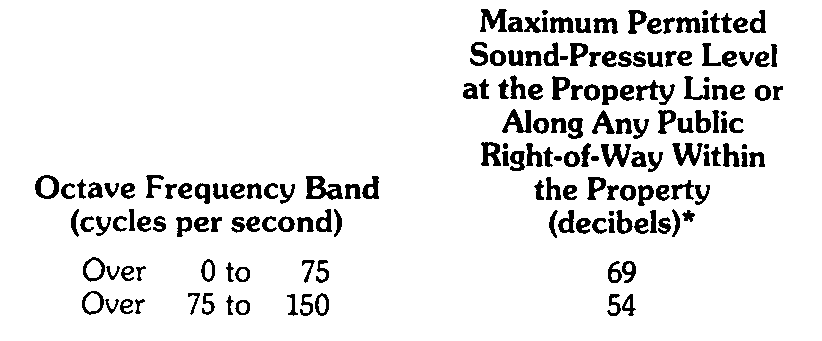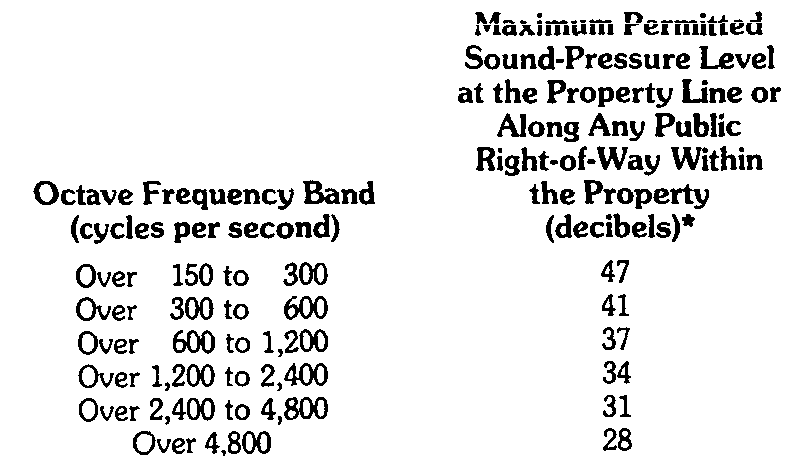H. Fire lanes. Fire lanes shall be designated as set forth hereafter on all plans and specifications for the construction or remodeling of any public or quasi-public structure where deemed necessary by the Township Engineer. The owner of any property on which there is presently located a public or quasi-public structure which has no fire lanes or on which the fire lanes presently existing are deemed inadequate by the Township Engineer shall be required, upon reasonable notice to provide, locate and designate appropriate fire lanes in accordance with the provisions of this chapter.�
(1) Design. Each fire lane shall be constructed to a minimum width of 18 feet and shall be constructed of either asphalt paving, concrete, concrete paving blocks or gravel. The fire lane shall be designed to support a weight of approximately 40 tons. Where the fire lane is required to access a roadway, a depressed curb must be provided. Construction of the fire lane can be combined with a pedestrian path if appropriately located and constructed. All fire lanes shall be visually designated either by their form or by the materials used in their construction. The design of the fire lanes shall be subject to review by the Township Engineer.�
(2) Location. Fire lanes shall be located so as to serve the entire building from the building site, so as to provide the most direct means of access for all emergency vehicles, to be sufficiently close to the building to provide the means to provide protection for the structure while being far enough removed to provide safety for the emergency vehicle using the fire lane in the event of collapse of the building. However, the ultimate authority with respect to the determination for the location of the fire lanes shall lie with the Town Engineer. The Township Engineer shall make the aforesaid determination and may request review and recommendations.�
(3) Signs. Fire lanes shall be appropriately posted with signs indicating the words NO PARKING-FIRE ZONE or NO PARKING-FIRE LANE in red letters on a white background, with a red line bordering the perimeter of the sign, said sign to be 12 inches by 18 inches, made of metal with rust-resistant reflectorized coating posted at the ends of each fire lane and at one-hundred-foot intervals therein. Fire areas shall also be designated by covering the face and top of the curb of the prohibited area with a solid yellow color of paint. The above criterion for the painting of fire areas is to be considered a minimum, and additional painting may be placed on the site consisting of crosshatches, solid yellow areas or such other designations, in addition to the curb painting, as may serve to act as a deterrent to parking in fire zones.�
(4) Construction and maintenance. The owner of the site upon which a fire lane is located shall be responsible for constructing, designating and marking fire lanes as required by this section. All maintenance and repair of the signs and pavement markings, if any, shall remain the responsibility of the owner and any successor. The maintenance and repair shall be continuing condition of any approval conferred with respect to the construction, remodeling or occupancy of the building or structure on the premises. Any failure to maintain or repair said signs or pavement markings shall be basis for voiding the prior approval. Approvals, which shall be conditional under this subsection, shall occupancy. No such approval shall be held to be void unless a hearing include, but not limited to final site plan approval and certificates of by the issuing office or agency has been held on due notice to the owner of the premises.�
(5) Enforcement. Enforcement of this Chapter shall be carried out under 182-17.2, et seq�
**Webmasters Note: The previous subsection, H., has been added as per Ordinance No. 2- 2001.�
An application for a permit shall provide documentation that the intended use will comply "nth the performance standards enumerated below. In the case of a structure being built where the future use is not known, a building permit may be issued with the condition that no certificate of occupancy will be issued until such time as this documentation is submitted with respect to the particular occupant. A new application and a new certificate of occupancy shall be required in the event of a change of any user of any structure. In the event any use fails to meet the performance standards after the certificate of occupancy is issued, the Zoning Officer may, after proper notice, revoke the certificate and the use shall terminate�
A. Buffers. Buffer areas are required along lot and street lines of all nonresidential lots where said property lines or the center line of adjacent streets abut residential uses or residential zoning district lines. Each permitted use shall provide and maintain attractively landscaped grounds and suitable screening in order to safeguard the character of adjacent districts. The width of the buffer area for each particular zoning district shall be as prescribed in Article IV. Buffer areas shall be measured horizontally and be either perpendicular to straight lot and street lines or radial to curved lot and street lines. Buffer areas shall be maintained and kept clear of all debris, rubbish, weeds and tall grass No structure, activity, storage of materials or parking of vehicles shall be permitted in the buffer area, and all buffer areas shall be planted and maintained with grass or ground cover, together with a dense screen of trees, shrubs or other plant materials meeting the following requirements.�
(1) Plant materials used in screen planting shall be at least six (6) feet in height when planted and be of such density that all the glare of automobile headlights emitted from the premises is obscured throughout the full course of the year The plant materials shall be of a species common to the area, be of nursery stock, be free of insect and disease and shall otherwise conform to the landscaping provisions of § 190-50C, which are applicable within the Pinelands Area [Amended 8-682 by Ord. No. 16-1982]�
(2) Buffer areas shall be permanently maintained and plant material which does not live shall be replaced within one (1) year or one (1) growing season�
(3) The screen planting shall be so placed that at maturity the plant material will be no closer than three (3) feet from any street or property line�
(4) The buffer area shall not be broken unless specifically approved by the Planning Board�
B. Electricity. Electric or electronic equipment shall be shielded so there is no interference with any radio or television reception at the lot line or beyond the operator's dwelling unit in the case of multifamily dwellings as the result of the operation of such equipment.�
C. Glare No use shall produce a strong, dazzling light or a reflection of a strong, dazzling light or glare beyond its lot lines Exterior lighting shall be shielded, buffered and directed so that glare, direct light or reflection will not become a nuisance to adjoining properties, adjoining dwelling units, adjoining districts or streets�
D. Heat No use shall produce heat perceptible beyond its lot lines. Further, no use shall be permitted which would cause the temperature to rise or fall in any part of ponds, streams or other watercourses�
E. Noise�
(1) The sound level of any operation (other than the operation of motor vehicles or other transportation facilities on public highways, operations involved in the construction or demolition of structures, emergency alarm signals or time signals) shall not exceed the decibel levels in the designated octave bands stated below The sound-pressure level shall be measured with a sound-level meter meeting the specifications of S1 4-1971 and an octave band filter set meeting the specifications of S1 11-1971, both specifications of the American National Standards Institute, New York, New York If the noise will be incapable of being measured with the sound-level meter and octave band analyzer, then the noise shall be measured by substituting an impact noise analyzer (General Radio Company, Type 1556-A-1955) for the octave band analyzer to determine the peak value of the impact�
(2) In cases where there is serious question whether a noise will be of nuisance and if the noise has incapable of being measured with an impact analyzer, then the noise-producing activity shall not be permitted If the noise source is already in existence, the noise shall be controlled to eliminate the nuisance�
(3) Between the hours of 10:00 p.m. and 7:00 a m the maximum permissible sound-pressure levels for smooth and continuous noise shall be as follows (all of the decibel levels stated below shall apply in each case):�

